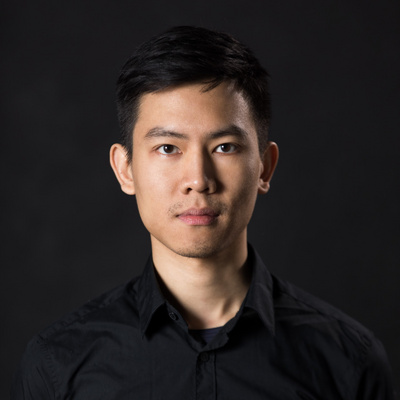Keep Blossoming: A 2020 Taiwanese Circus Retrospect in the Pandemic Era
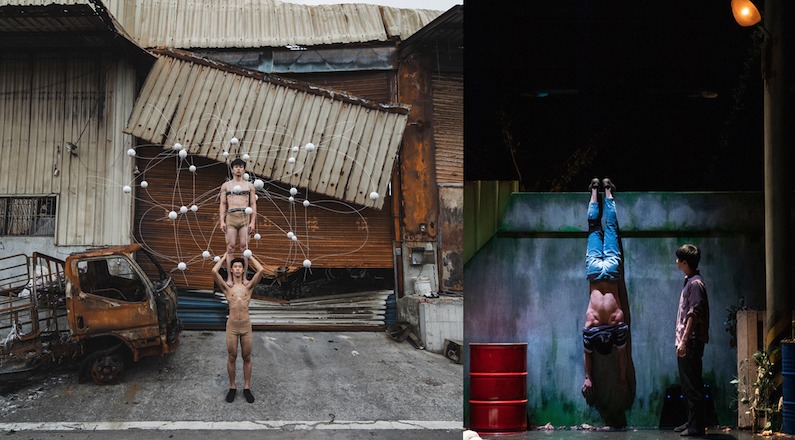
What an odd year for everyone in every corner of the world. In Taiwan, the art centers were closed for about three months before June 7th. After that, theatres allowed the full capacity of audiences. The entry process for events/performances included temperature measuring, hand disinfection, and asking the audience to provide contact information, all of which has become the new normal. The virus really challenged the conventions of society and understanding, with no exceptions for circus practitioners. But still, the energy of Taiwan’s circus community didn’t stop at all but blossomed into various kinds of flowers.
As the first exchange article fromDuMaXiwith CircusTalk, we want to offer a window for English readers to have a glimpse into the Taiwanese circus environment with a retrospective report.
New Companies, New Works, New Topics
In 2020, lots of new circus companies presented their first works in Taiwan, but also many artists initiated new directions. A-Z CIRCUS (鏡距離馬戲) presented its first creation Long Time No See. Tien Circus Theatre (天馬戲創作劇團), which just re-organized and collaborated with the director Zi-Yi Sun (孫自怡) from A Theatre for Jasmine’s Magic Adventure, which successfully merges circus and musical aesthetics together. One of the striking new companies is 0471 Acro Physical Theatre (0471特技肢體劇場). It opened up two new works within four months: NONOSENSE and Eternal Right.
Welcoming its 5th anniversary, Eye-Catching Circus (創造焦點) created a whole-female ensemble work #Since1994, empowering female circus performers with vivid images that never appeared before on the stage of circus in Taiwan.
Also, celebrating its 10th anniversary, FOCA – Formosa Circus Art (FOCA福爾摩沙馬戲團) presented two new productions: Disappearing Island and Moss. The first was collaborated with Filipino artist Leeroy New, while the other choreographed by Tsai-Wei Tien (田采薇) and Jan Möllmer from the German dance theatre company – Peculiar Man. These two productions wrapped up FOCA’s Interdisciplinary Trilogy by exploring the aesthetics of promenade theatre and dance theatre, both responding to the urban development issue where FOCA’s studio is located. These two productions set circus records in Taiwan as both nominated for Taishin Arts Award.
Earlier this year, the experimental work Deconstructing the Physical Discourse of Circus Performers in the Want to Dance Festival by Shih-Hao Yang (楊世豪) is one of the rare conceptual circus works in Taiwan, and also received critics’ attention andTaishin Arts Award nomination. The time-honored Taiwanese Acrobatic Troupe invited Fangas Nayaw (陳彥斌) and I-Fen Tung (董怡芬) who brought a whole new feast to the table: Unknown Aurora, combining technological elements with the amazing traditional expert skill of the troupe.
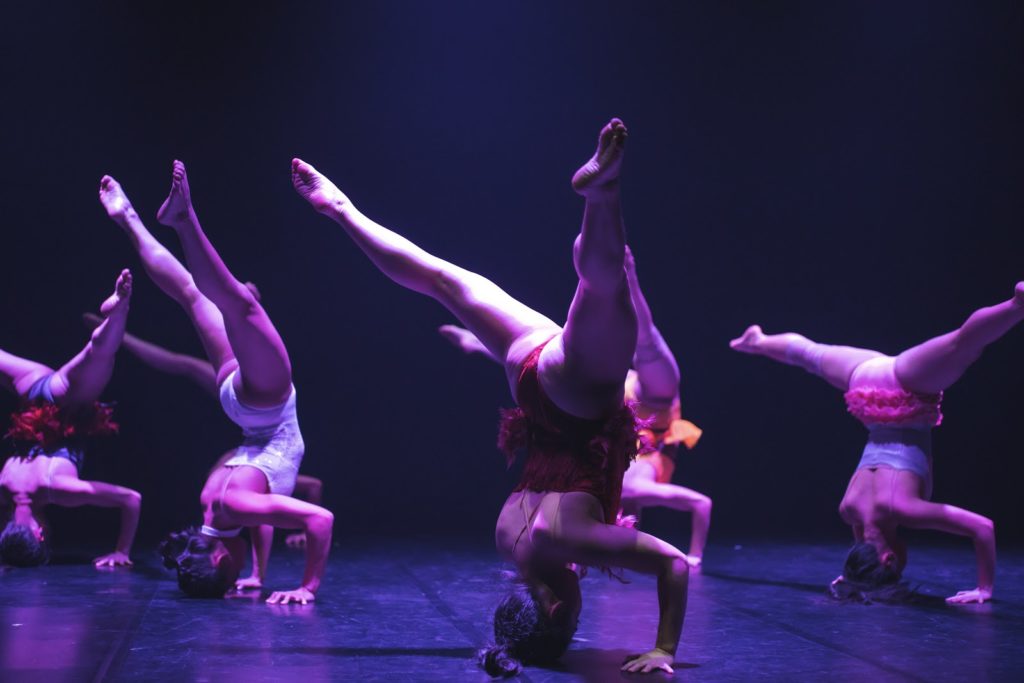
Connecting Places or Meeting the needs of Policy? A Surge of Site-Specific Shows and Outdoor Performances
Following the epidemic slow down in June,Taiwan’s Ministry of Culture hosted the Double Fifth Performing Festival (端午謝平安‧藝文大匯演), announcing the green light for performances. Local governments continued the policy of urban marketing and space activation in recent years, encouraging people to step into the outdoors and out of theatres. Since the circus is always good at adapting to different conditions, it has been strongly revived with this trend. Circus showed its face at multiple public events, including at the Taipei Arts Festival, the Taipei Children Arts Festival, the Taiwan Design Expo in Hsinchu, Nuit Blanche Taipei, etc. There was also an independently-organized project, e.g. Flipped Old Town by LIT ART (狂夢藝術 )based in Taichung, also, its first work.

What is truly intriguing is that afterHsingho Co., Ltd.(星合有限公司) curated Tainan Street Arts Festival in 2019, the Taiwan Street Arts and Culture Development Association (臺灣街頭藝術文化發展協會) also put together the Hualien Performing Public Space Festival. Circus practitioners being appointed and hosting big scale urban festivals seems to become a paradigm. It is truly a positive phenomenon that the curatorial works were given to professionals or non-governmental organizations–giving them the agency to begin new traditions. Considering that the majority of the events are organized under the appointment of local cultural bureaus, one wonders, will there still be space to deliver the urban politics and to convey the aesthetic relationship of circus and street arts? This is a situation worth continuing to observe.
Institutions Invest in Artist Cultivation, Circus Companies Benefit from Subsidy
As the public arts centers and funding systems have gradually been placed in the structure, the diversification of the objects, forms, and the timeline of art subsidy is an obvious phenomenon. Taiwanese circus creations also board the train of multi funding systems. The upper levels seem to have accepted the artistic identity of circus, reducing the anxiety around the question of categorization.
With its grand opening of the three-theatre building not far away,Taipei Performing Arts Center (TPAC) initiated the project Circus Factory as another new cultivating mission. In the presentation at the end of December, there were 18 different sharings in four hours. Presenting ideas including dancing with animals, real-time circus vision, the intertext of circus and puppets, deconstruction of disciplines, etc. The evening projected the impressive glowing creativity of the circus.

Director of TPAC Provisional Office, Austin Wang (王孟超), observed that in the Taiwanese circus field there has been a lack of ability for story-telling and creating apart from high-skill/prowess. He mentioned after the Circus Factory presentation: “We deliberately combined a group of circus-practitioners (in half), and none-circus practitioners (for another half), hoping that they would crash with different sparkles.” Co-curators of the project, Hsing-Ho Chen (陳星合) and Yu-Lun Chiang (江侑倫), indicated that they will shift the criteria of the selection to those who have a stronger willingness for creation. They also emphasized that Circus Factory not only welcomes circus-practitioners but also those who want to have the capability to use circus as a creative component.
Looking south, theNational Kaohsiung Centre for the Arts, Werwuying has initiated a circus cultivation project with intense workshops even earlier. In 2019, Weiwuying joined Seoul Street Arts Creation Center (SSACC) for Circus Asia Residency (CAR), a satellite project of Circus Asia Network (CAN). During the pandemic, the project was forced to turn towards the local sector. Facilitated by choreographer Yen-Fang YU (余彥芳) and myself (dramaturge), this project Circus Artists Residency explored the notions and possibilities between circus and dance as one of the crucial components of the Weiwuying Circus Platform.
Hosting for the fifth year, the week-long Weiwuying Circus Platform was held without international companies around, the only ticket selling show was Moss by FOCA. Meanwhile, occupying the Banyan Plaza for two afternoons, the public event Circus Wonderland was opened and strung by On. P. Young’s (紅鼻子馬戲團) Spinning Macarons. This over-three-hour long event consisted of seven different Taiwanese circuses duo/solo artists and kept igniting circus enthusiasm in the audience. On the last day, the “Open Studio” event presented the special project ofNational Taiwan College of Performing Arts Mountains and Seas. Brotherhood. Hackers directed by Li-Tsuei SUN (孫麗翠), and the sharing by five artists of Circus Artists Residency Project hosted in non-conventional spaces– even in the park. Weiwuying also welcomed more than two dozen center members to join this work-in-progress event.
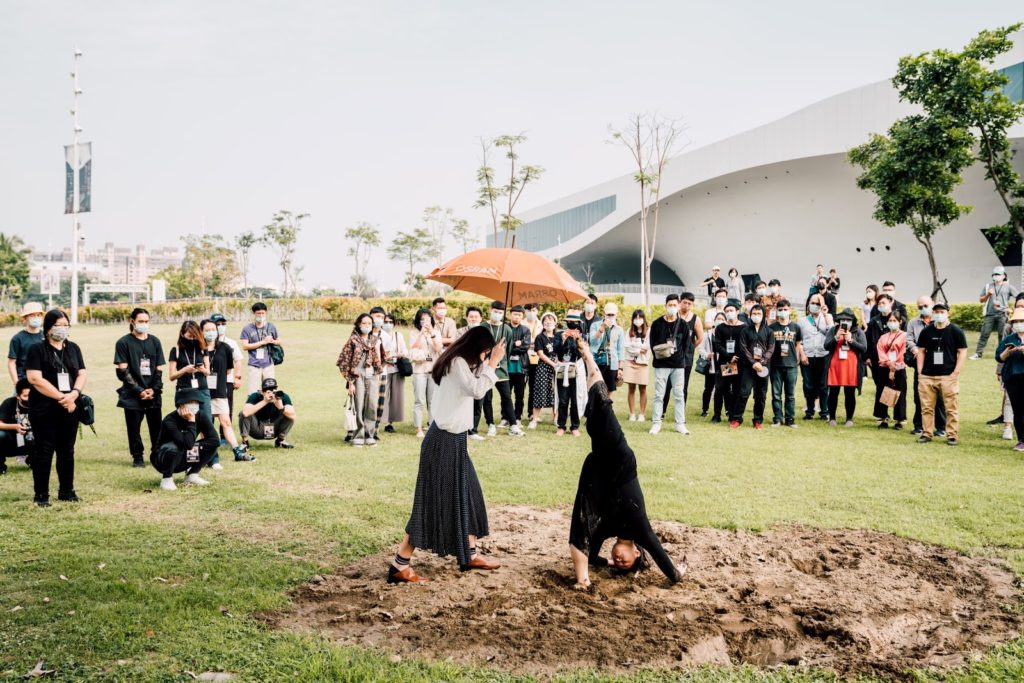
Disrupted by Epidemic, Finding New Pathways for International Connections
Though the epidemic was contained well in Taiwan for the whole second half of 2020, the international exchanges and markets had no luck at all. All the international invitations were canceled at Weiwuying Circus Platform. And the rocket-launching personnel training collaboration project betweenWeiwuying, National Taiwan College of Performing Arts, andCentre National des Arts du Cirque (CNAC)was put on hold. Since the epidemic continues, whether the international program and participation of Weiwuying Circus Platform will be able to transform into online mode (or not), like Taiwan Dance Platform also hosted by Weiwuying last year, is still uncertain.
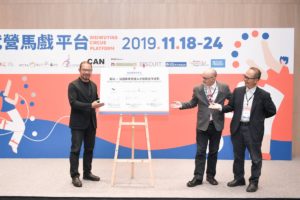
Hosted by Hsingho Co., Ltd&Hoooh, Ting-koo-ki Mad Skills Battle was programmed again at “Play Arts” inTaiwan Contemporary Culture Lab (C-LAB) with only Taiwanese participants. The concurrent professional workshops were changed to be online versions. Also,Hong Kong Tai Kwun and Hsingho Co., Ltd organized together Ting-koo-ki Mad Skills Battle – Daydream of Circus, broadcasting circus videos from jugglers around the world, including Wes Peden’s eye-catching video work. Under the funding of “Beyond Epidemic” byNational Culture and Arts Foundation (NCAF), FOCA has taped and presented the video version of Disappearing Island with an online forum discussing the possibilities of circus video with international peers and professionals. While it seems there is no end to the pandemic, the question of conducting international collaboration is still waiting to be answered in more innovative ways.
From Documenting to Criticizing: The Lack of Circus Writing
Creations have blossomed one after another, but for the prevalence of writings on circus the situation is quite the opposite in Taiwan. Taking the most iconic performing arts magazine “PAR – Performing Arts Review” as an example, the planning for circus topics occurred usually while foreign companies were touring in Taiwan. Since the National Performing Arts Centre began fully functioning with three centers in North, Mid, and South Taiwan, PAR has been bearing the responsibility for promoting their program and thus reserving less and less space for heterogeneous writing and sub-genres. In recent years, there were very few news reports about circus in PAR, and almost no critics. With its transformation to the bi-monthly magazine and re-named as “Performing Arts Redefined” in 2021, it’s still unknown if there will be space for circus writing. On the other hand, the online critics’ platform “Pareviews” supported by the National Culture and Arts Foundation (NCAF) is operating with a project-based subsidy. Under the funding of NCAF, the selection of art being critiqued depends on each grantee’s focus, making it difficult to reflect on the development of the environment as a whole.
Weiwuying Circus Platform has been editing Circus Keyword in the program book and posting on its website in recent years, currently focusing on the explanation of different circus disciplines. While publishing its 10th-anniversary memorial issue A Decade of Circus Dream, FOCA retrospected its productions with in-depth interviews and themed articles. Also listing FOCA’s milestones with big moments of Taiwan circus history, the book tries to show the interactive phenomenon of the company and the environment.
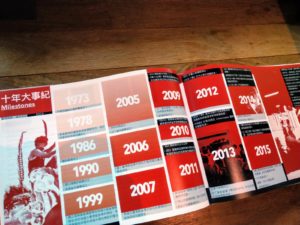
The context of Taiwanese circus can be seen in two pathways: one is inherited from the Chinese traditional acrobatic training method, which is also the academic training system now in Taiwan; another is learned and connected from foreign discourse and aesthetics, especially the notion of contemporary circus from Europe. But either way, there is a huge absence of writing, analyzing and criticizing, not to mention the deep understanding or academic research of circus aesthetics and kinaesthetics. At the moment, critics from other backgrounds joining the line of circus writing naturally put on the glasses of his/her previous knowledge framework. Sometimes it even seems insufficient when critics draw from their professional knowledge of circus. There remains a lot to be invested in the buildingof a circus writing framework and knowledge system in Taiwan.
All photos provided courtesy of Tai-Jung Yu. Feature photo FOCA - Formosa Circus Art's (FOCA福爾摩沙馬戲團) 2 new productions Disappearing Island & Moss set records as both nominated for Taishin Arts Award ©Formosa Circus Art
Editor's Note: At StageLync, an international platform for the performing arts, we celebrate the diversity of our writers' backgrounds. We recognize and support their choice to use either American or British English in their articles, respecting their individual preferences and origins. This policy allows us to embrace a wide range of linguistic expressions, enriching our content and reflecting the global nature of our community.
🎧 Join us on the StageLync Podcast for inspiring stories from the world of performing arts! Tune in to hear from the creative minds who bring magic to life, both onstage and behind the scenes. 🎙️ 👉 Listen now!
